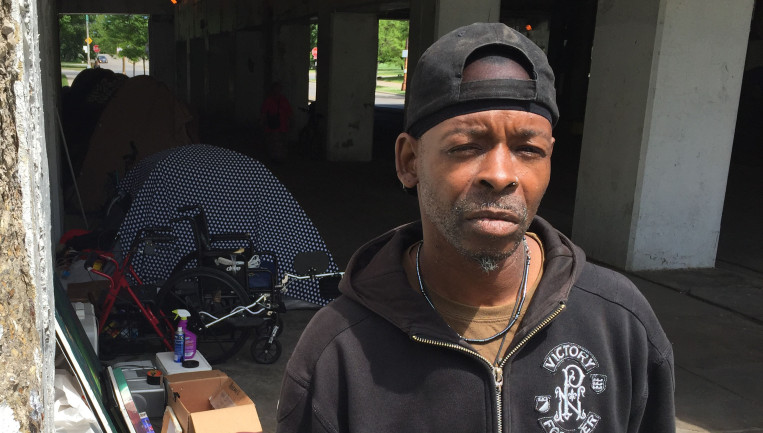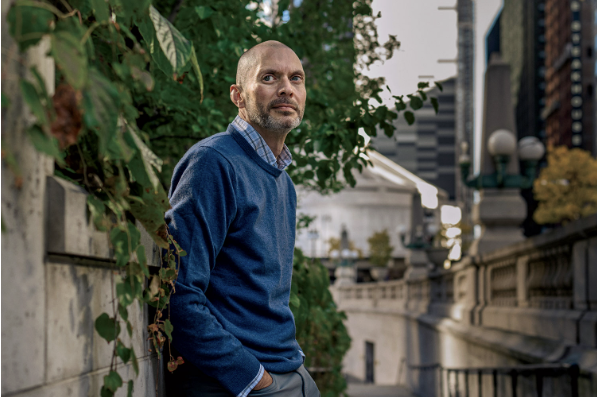By Mark Brown, columnist
Harassment sweeps couldn’t permanently chase homeless people out from under the Lake Shore Drive viaducts at Lawrence and Wilson avenues.
Efforts to find housing for them resulted in other homeless individuals moving in to take their place on the sidewalk.
Now the city is looking to a road construction project to accomplish what it otherwise has been unable to do: Oust the homeless from these two highly visible North Side locations.
Contracts to rehab decaying bridges over Lawrence and Wilson were advertised for bid Friday.
Work is tentatively scheduled to begin in late August or early September.
The homeless people have been told they must move before the work starts. The question, as always, is where will they go?
“We’re trying to get them to house the people instead of just tossing them out,” said Mark Saulys, who currently lives in a tent under the Wilson viaduct and has helped try to organize his fellow tent dwellers.
So far, the city hasn’t committed to giving priority to the viaduct residents over other homeless individuals who have requested housing.
The homeless people at Lawrence and Wilson argue they should be moved to the top of the city’s triage list for affordable housing because they are in effect being evicted.
Ald. James Cappleman (46th), who has had a strained relationship with homeless advocates over the years, said he agrees.
“We should provide housing to them first,” Cappleman said. “I believe they deserve top priority. This is an unusual situation.”
In addition to moving out the homeless, plans for the project call for the installation of six-foot bike lanes cutting into the wide sidewalks that have made it possible for the homeless to pitch tents beneath the viaducts and still allow pedestrians to pass. New security fences also are planned.
In other words, the new design appears to intentionally preclude the homeless encampments from returning.
City officials did not address that issue in a statement Monday promising to give the viaduct residents 30 days notice before they must move.
“The Homeless Outreach and Prevention (HOP) team will also work with those affected to ensure they are safe and know all of their options for services. This will include working with partner agencies to provide resources for food, shelter and other needs,” the statement said.
That sounds like the basic approach the city uses every time it clears out a homeless encampment, which often boils down to little more than offering them a ride to Pacific Garden Mission.
Homeless encampments under the Lake Shore Drive viaducts date back many years, although the tents are a more recent addition.
The encampments have sparked considerable debate in Uptown between nearby residents who complain the encampments make it unsafe to reach the lakefront, and others who argue they aren’t hurting anyone and should be left alone. I’m in the latter camp.
As I’ve explained in the past, the location is attractive to homeless people because it is relatively safe, nearby other homeless services in the Uptown neighborhood and a magnet for Good Samaritans dropping off food and clothing.
A spokesman for the Chicago Department of Transportation said all lanes of Lake Shore Drive will remain open during what is planned to be a five-month project. Lanes on Lawrence and Wilson will be reduced beneath the viaducts during the project.
The American Road & Transportation Builders Association placed the two viaducts on its top 10 list of most traveled structurally deficient bridges in Illinois.
Note: The ranking is by most traveled, not most dangerous.
But the homeless people don’t question the need for the construction work, said Louis Jones, 50, who has been living beneath the Wilson viaduct for more than a year.
The crumbling concrete is self-evident beneath the structures, which were built in 1933.
Still, the homeless don’t believe the project should serve as a convenient pretext to get rid of them.
“A lot of people don’t have nowhere to go,” Jones said.
And moving them around doesn’t change that.







